How To Create Google Apps Admin Account
Themeisle content is free. When you purchase through referral links on our site, we earn a commission. Learn More
Need a helping hand with how to set up Google Workspace (formerly G Suite) for your website so that you can have a professional email address?
Google's Workspace service can help you with a lot of things, but one of the most notable features is that it hosts your email for you and lets you use the Gmail interface with your own domain name (e.g. you@yourdomain.com), thus giving you a professional email address.
That makes it a great option as an email hosting solution for your WordPress site, though this guide is by no means limited to just WordPress users.
In this how to set up Google Workspace (formerly G Suite) tutorial, I'll take you through every step that you need to take to get Google Workspace working with your website and running your professional email address.
By the end, you'll have a working email account hosted through Google Workspace, as well as access to all the other Google Workspace functionality (like Google Hangouts, separate Google Drive storage for Docs, Sheets, etc.).
Let's dive in!
How to set up Google Workspace (G Suite) in 4 steps (with screenshots)
Here's a quick overview of the steps that you'll need to take to set up Google Workspace with your website and professional email address:
- Register an account and go through the Google Workspace setup wizard
- Add other users to your account (optional)
- Verify domain ownership with Google by adding a TXT record to your DNS records
- Set up email by adding MX records
Ready? Here's how to set up Google Workspace…
Step 1: Complete the Google Workspace (G Suite) account setup wizard
To get started, you'll need to create your actual Google Workspace account.
To do that, head here and click the big Get Started button:
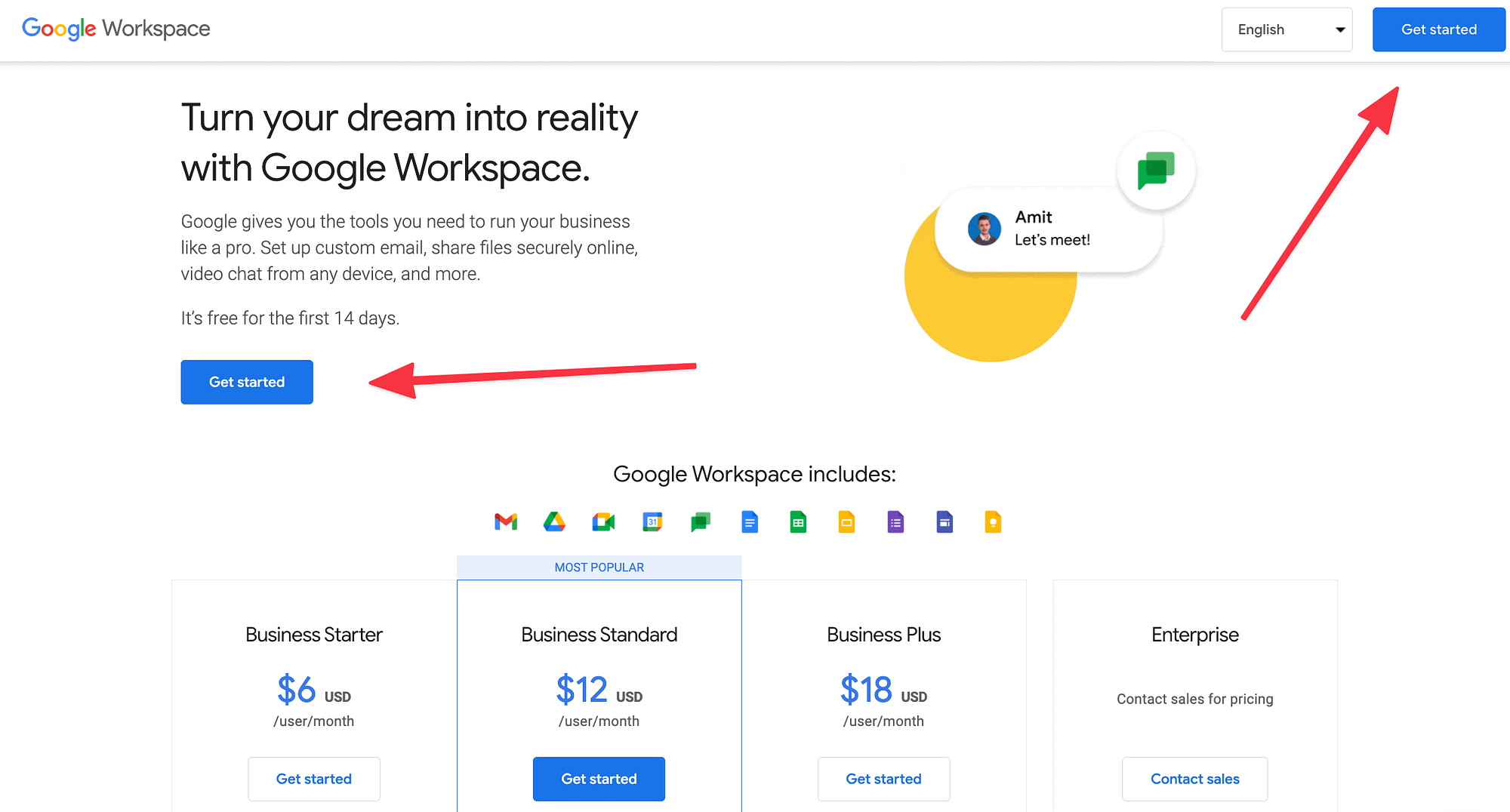
This will launch the account setup wizard, which will prompt you to provide Google with some information.
First, enter some basic information about your account. Then, click Next:
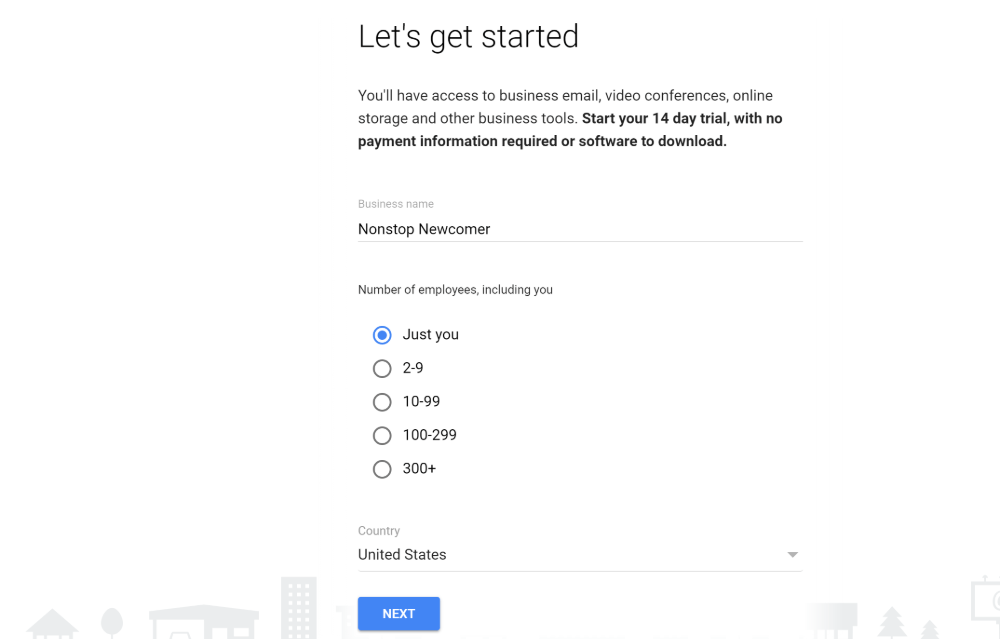
On the next screen, you'll need to enter the information for your Google Workspace admin account.
If you've already set up email through your host, you use that email in the Current email address box. Otherwise, you can enter a personal email address:
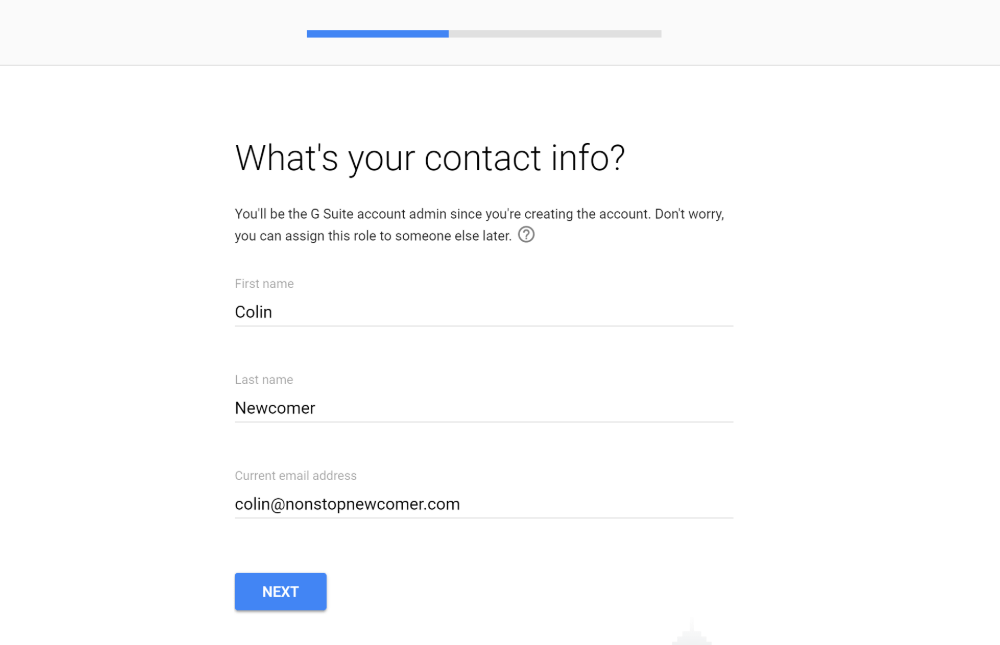
Next, indicate whether your business already has a domain name. If you already have a website that you want to use with Google Workspace, you should choose Yes, I Have One I Can Use:
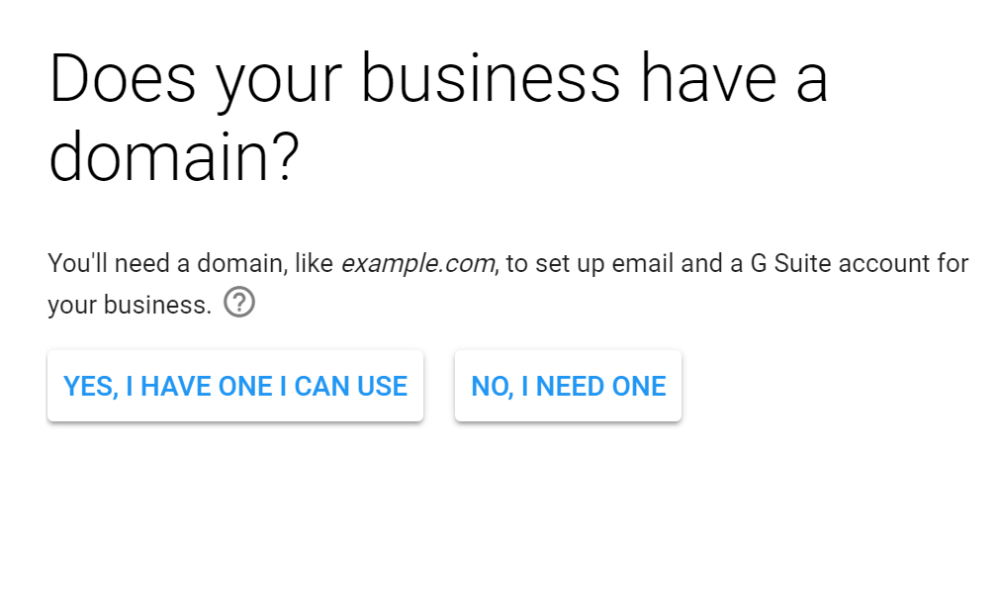
Then, enter your existing domain name in the box and click Next:
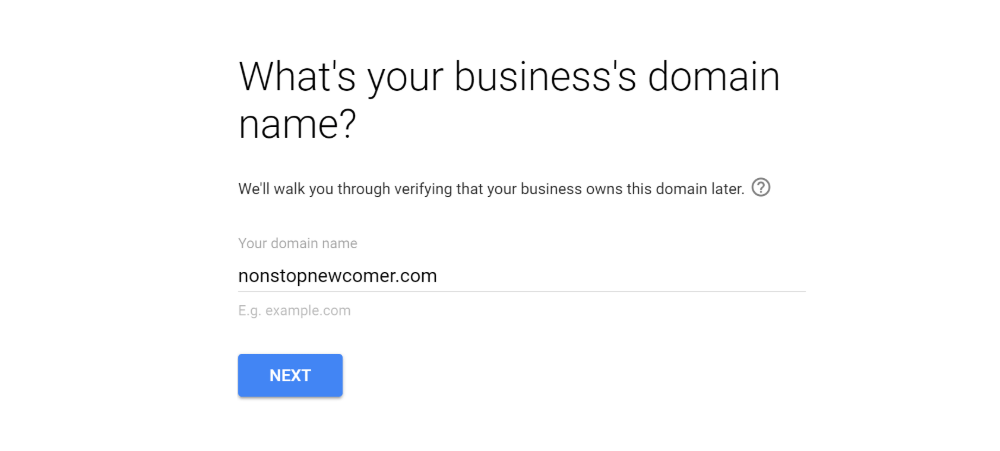
Then, click Next again to confirm that you want to use that domain name:
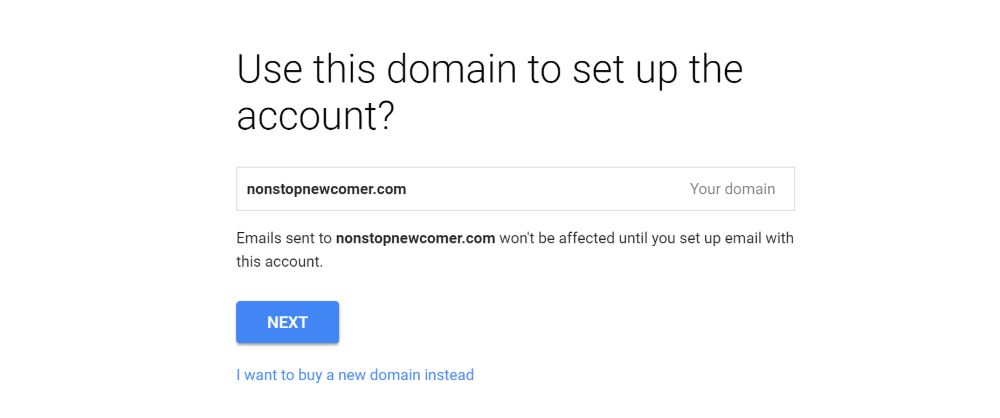
After that, you'll need to enter a secondary recovery email address, which you'll use in case you can't access your primary email address. For example, you could enter your personal Gmail address here, if you have one:
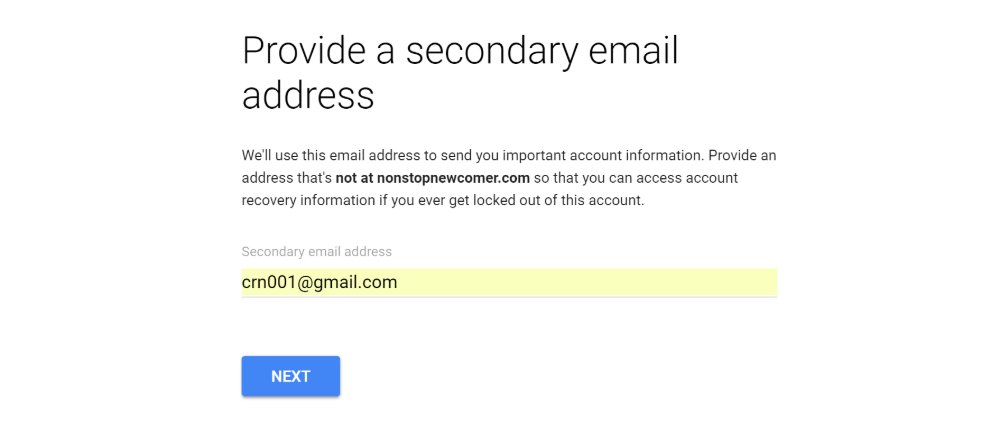
Then, you'll need to enter a username and password that you'll use to sign into Google Workspace. Your username will be your business email address by default (i.e. username@yourdomain.com), so you should keep that in mind when choosing which username to use.
Then, click Agree And Create Account to finish the process:
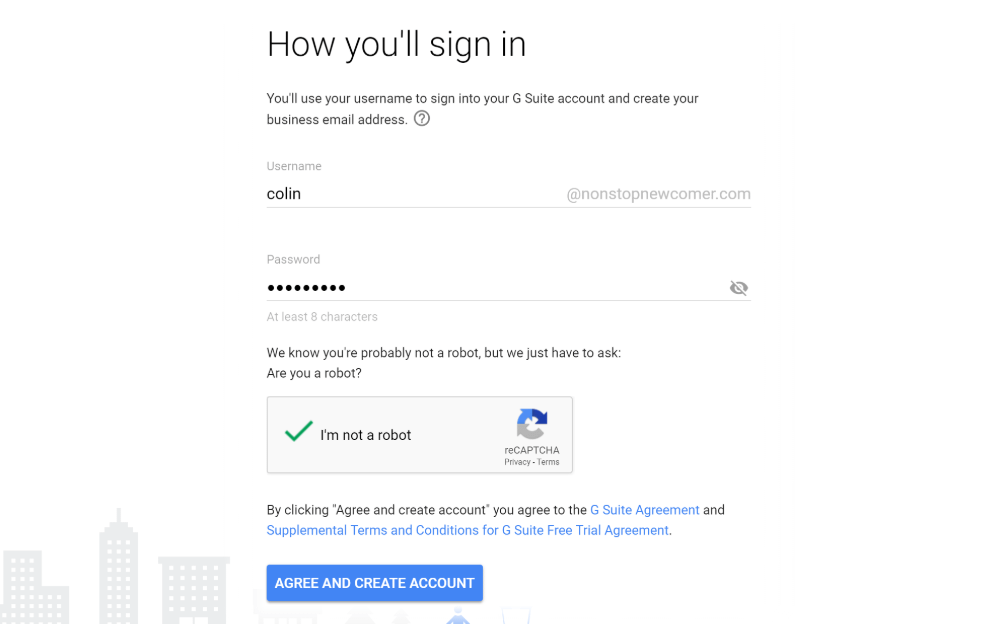
Step 2: Add other people to Google Workspace (optional)
Once you finish the wizard above, you'll see a confirmation that your account was created, as well as a button to Go To Setup. Go ahead and click that button:
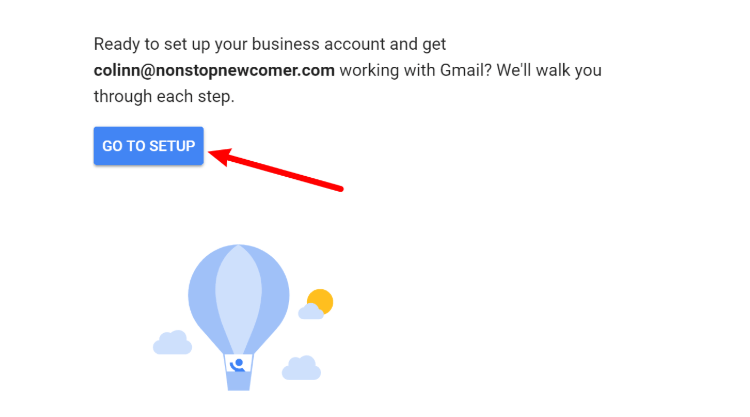
If you want to give other people access to your shared Google Workspace account, click Start next to Add people to your Google Workspace account. Then, you'll be able to add additional users.
If you're the only person who will use this Google Workspace account, just check the box for I added all user email… and click Next:
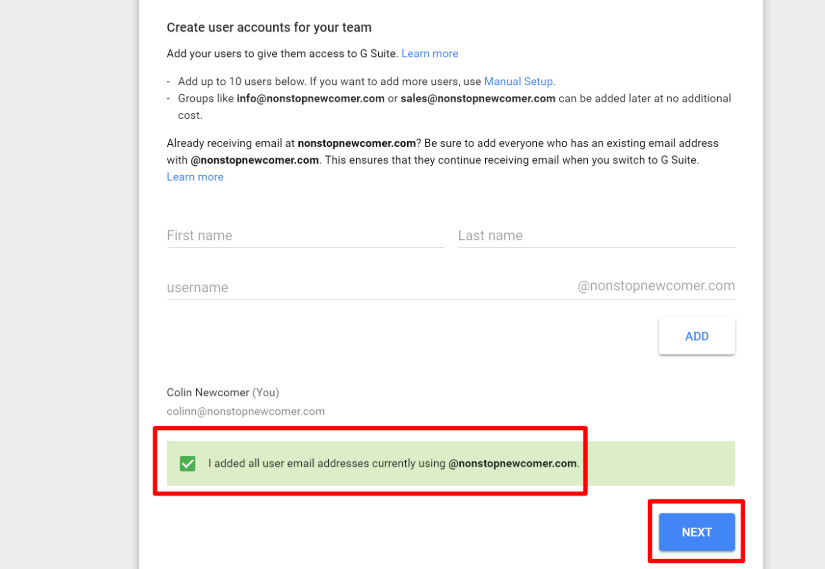
Step 3: Verify your domain name with Google
Now is when you start getting into the more technical aspects of how to set up Google Workspace (G Suite).
First, you'll need to verify your domain ownership with Google by adding something called a TXT record.
To help you do this, Google will try to detect where your domain is hosted and provide instructions. For example, Google detected that my example site is hosted at SiteGround.
These instructions are actually pretty helpful, so they may be all you need.
But to give you a little extra help, I'll show you how to do things using cPanel, which is the hosting dashboard that most web hosts use (especially budget web hosts). If your host doesn't use cPanel, you might need to consult your host's support if Google's instructions aren't enough by themselves…
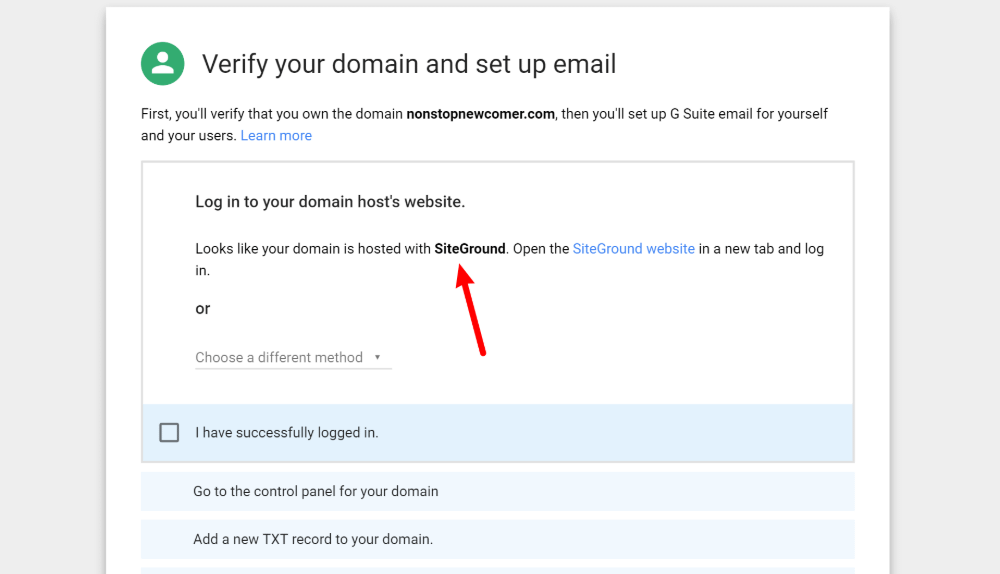
To get started, log in to your cPanel dashboard at your host. Then, look for the Advanced DNS Zone Editor tool:
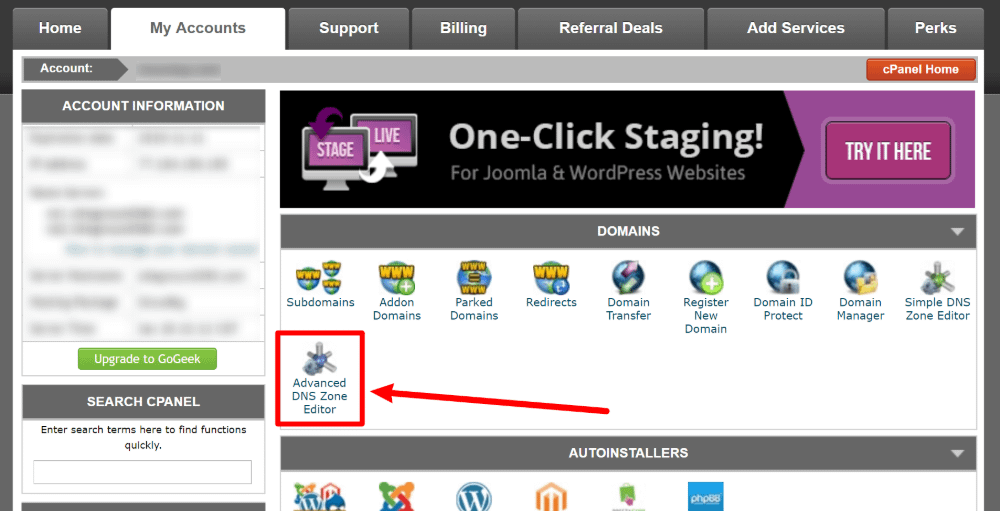
Next, select your domain name from the drop-down.
Then, you need to use the form to add a TXT record that contains the information from the Google Workspace (G Suite) website:
- Name – your domain name
- TTL – 86400
- Type – TXT
- TXT Data – copy and paste from the Google Workspace (G Suite) interface (click below if you're not sure where to find this)
Click if you can't find the text for the TXT Data field
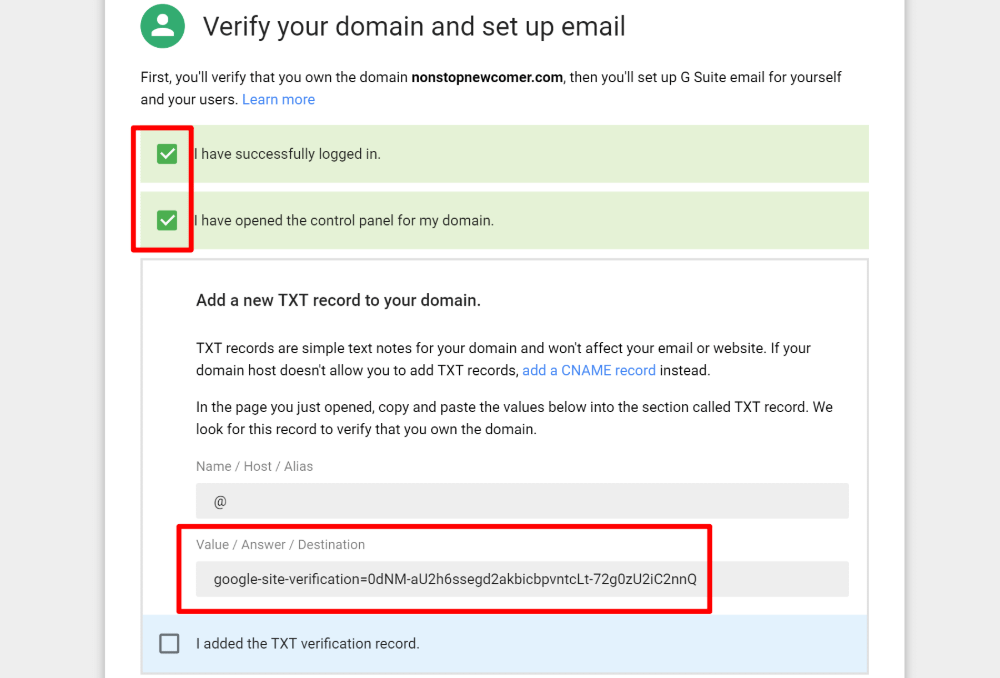
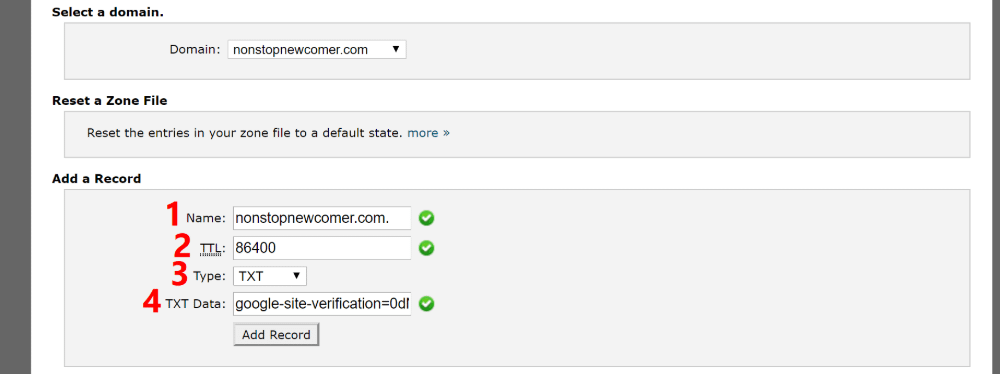
Step 4: Add MX records for your professional email address
Next, you need to complete one more technical step and add something called MX Records. These are what allow Google Workspace (G Suite) to handle email for your domain name.
Again, I'll show you how to do this using cPanel. But if your host doesn't use cPanel, you might need to reach out to your host's support staff.
To get started, go back to your main cPanel dashboard and find the MX Entry tool:

Then, select your domain name from the drop-down. After that, you should see a pre-made button for Set Google MX. That's all you need to click! No need to do things manually:
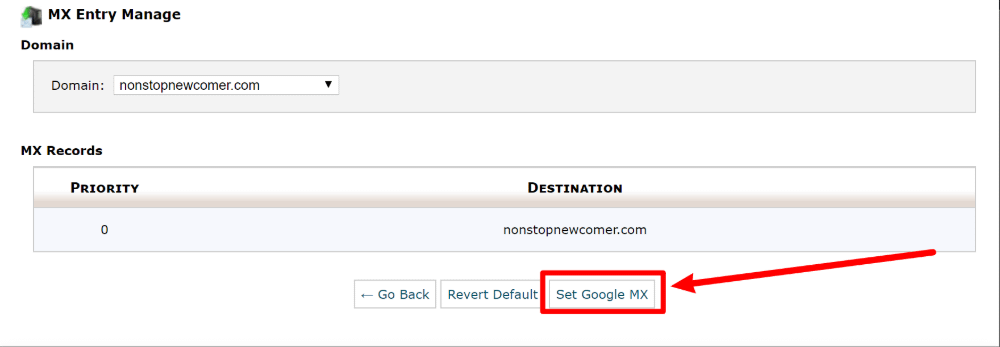
If you don't see that pre-made option for Google, you can open the Advanced MX Editor from your main cPanel dashboard.
Then, you can manually delete the existing entries and then use the form to add the following entries:
| Priority | Destination |
|---|---|
| 1 | ASPMX.L.GOOGLE.COM |
| 5 | ALT1.ASPMX.L.GOOGLE.COM |
| 5 | ALT2.ASPMX.L.GOOGLE.COM |
| 10 | ALT3.ASPMX.L.GOOGLE.COM |
| 10 | ALT4.ASPMX.L.GOOGLE.COM |
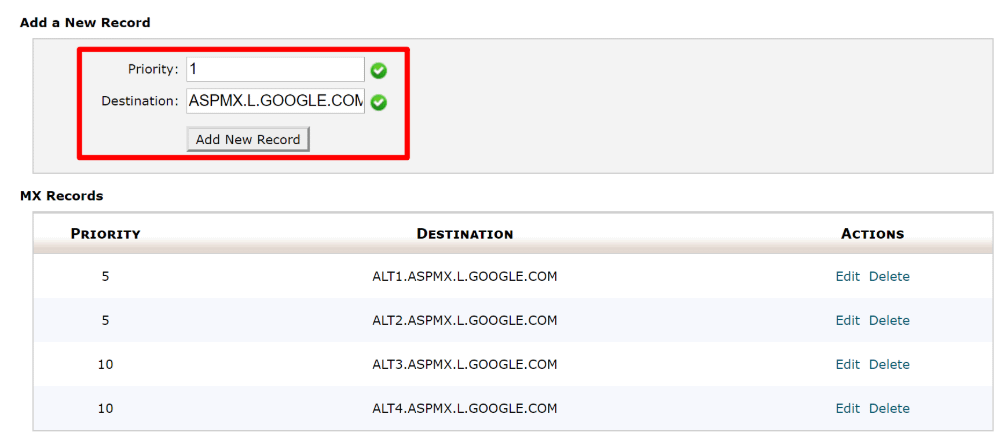
Once you've finished adding the entries, go back to the Google Workspace (G Suite) interface and click the Verify Domain And Set Up Email button:
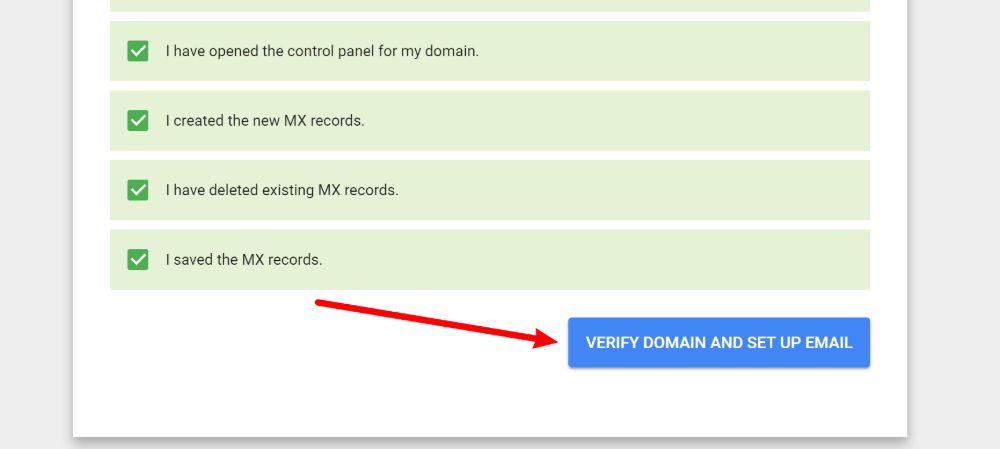
And if you did everything correctly, you should get a success message:
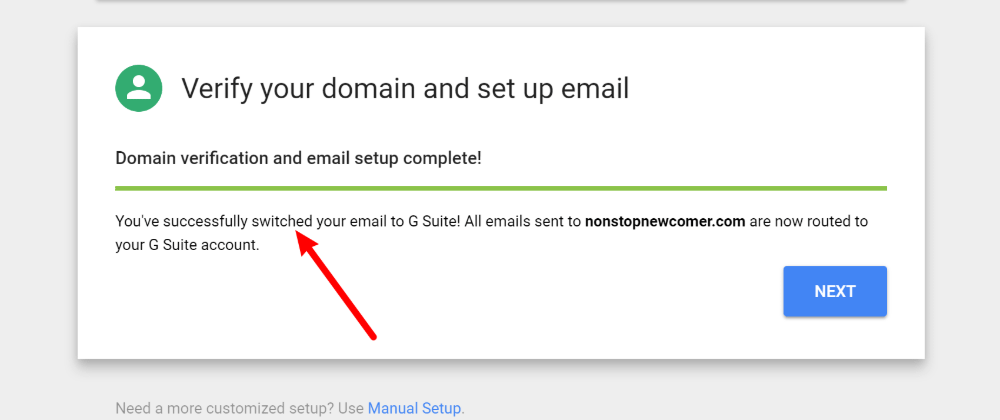
You just set up Google Workspace (G Suite) and your email should start working soon – enjoy! Note, it might take a few hours before your email starts working, so don't worry if you don't receive emails right away.
Wrap up + how to manage your new Google Workspace (G Suite) account
At this point, you've set up Google Workspace (G Suite) and your professional email address should be working.
You can switch to your new Google Workspace (G Suite) account by clicking on the icon in the top-right corner.
And if you need to manage your Google Workspace (G Suite) account – like adding new users or managing apps – you can do that from the Google Workspace (G Suite) Admin Console:
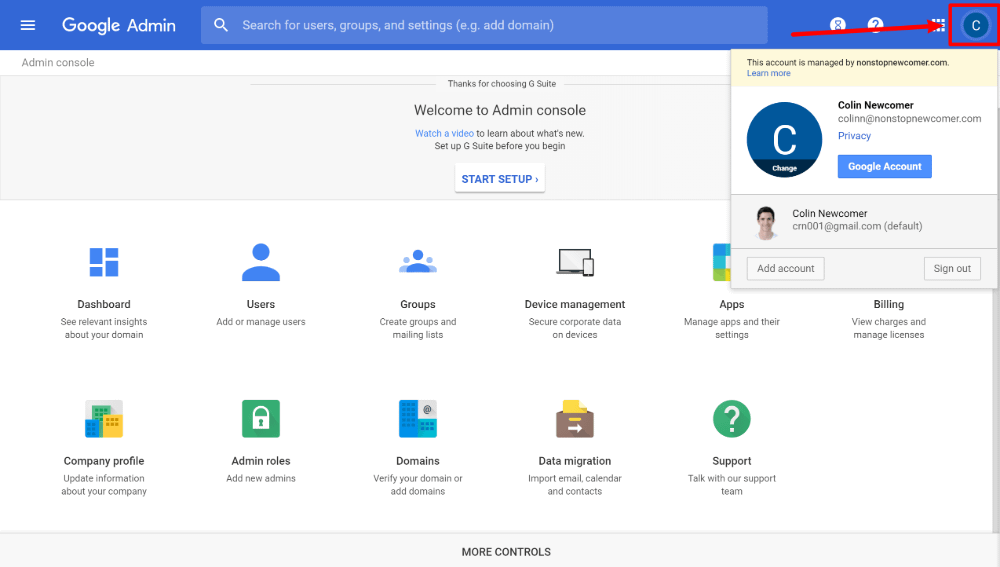
For more information about the admin console, check out this Google page.
Do you have any other questions about how to set up Google Workspace (G Suite) with your WordPress site or professional email address? Let us know in the comments and we'll try to help!
Free guide
5 Essential Tips to Speed Up
Your WordPress Site
Reduce your loading time by even 50-80%
just by following simple tips.
Download free guide
How To Create Google Apps Admin Account
Source: https://themeisle.com/blog/how-to-set-up-g-suite/
Posted by: taylorthue1949.blogspot.com

0 Response to "How To Create Google Apps Admin Account"
Post a Comment